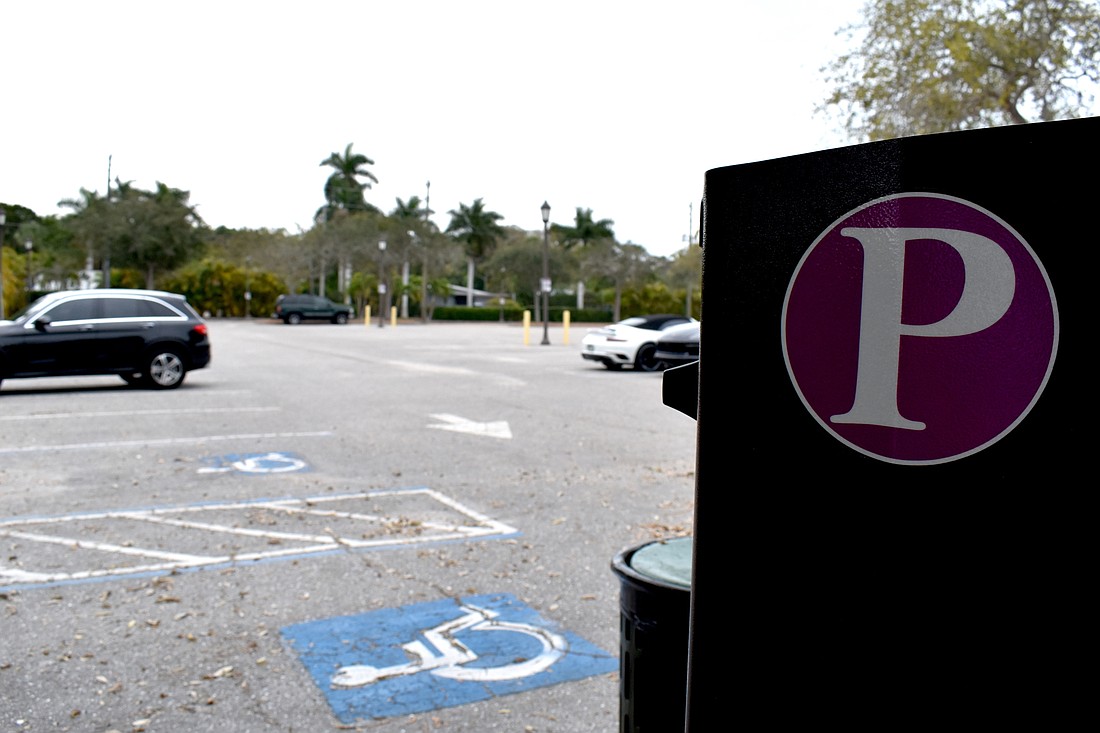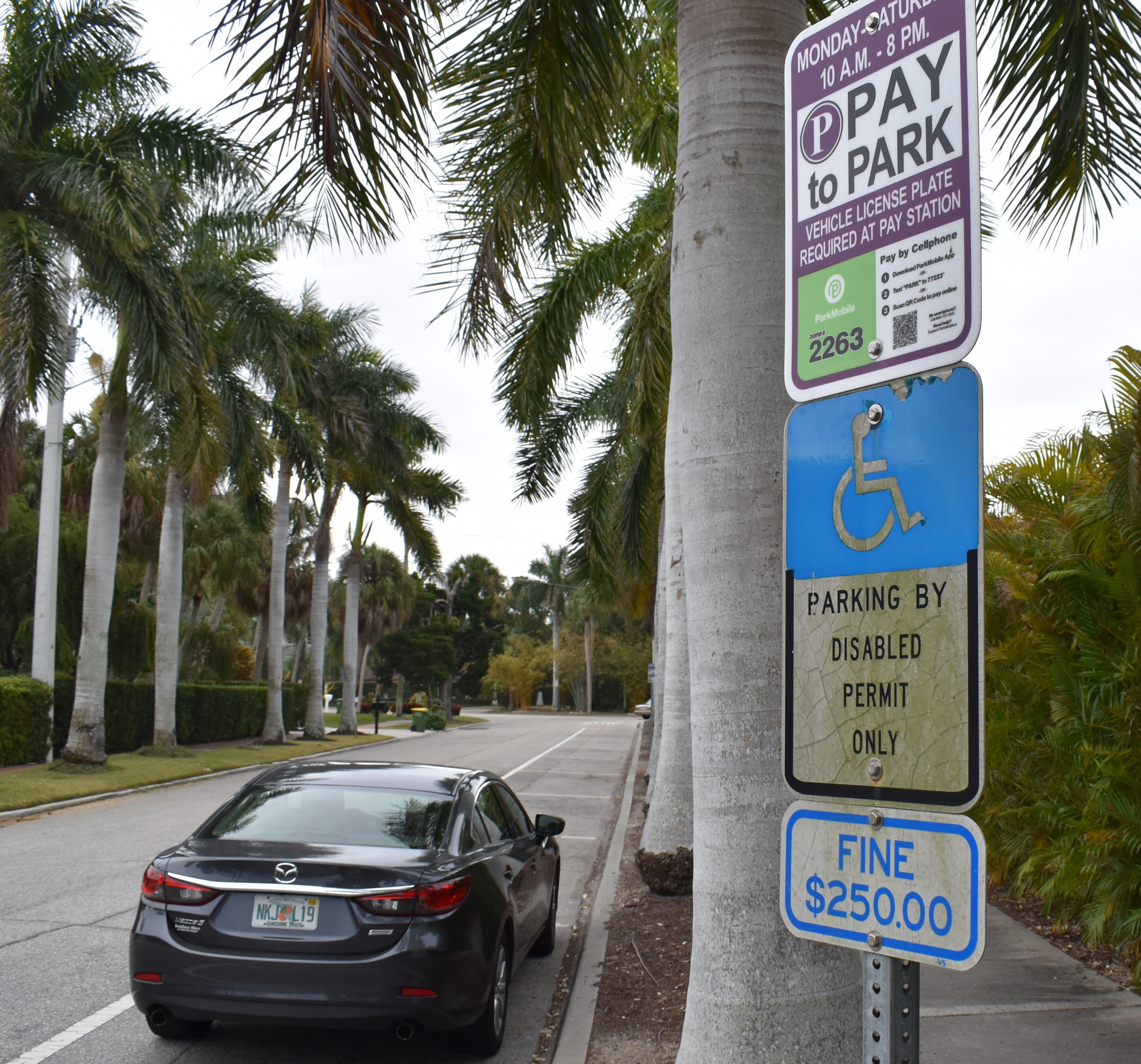- May 1, 2025
-
-
Loading

Loading

What started in May as an unsolicited offer to buy and redevelop a city-owned parking lot on St. Armands Key and inspired four more offers to do the same came to a close, for now, on Monday with a Sarasota City Commission vote to take no further steps on the proposal.
The 4-1 vote doesn’t mean a developer couldn’t return with a revised offer for the 1.98 acre lot on Fillmore Drive.
But the unique provisions of St. Armand Circle’s paid-parking program and the requirements of a parking-garage bond that runs until 2038 prompted both City Attorney Robert Fournier and City Manager Marlon Brown to recommend commissioners set aside the plan, at least for the time being.
“The time will come when it’s quite doable," Fournier said, adding now was not the time.
The interest in the Fillmore Drive lot dates to mid-2021, when representatives for JWM Management presented conceptual plans for the city-owned site to the commission. JWM outlined its desire to construct a hotel, grocery store and residences. Following that offer, City Commissioners in August signaled a desire to receive offers from any prospective purchasers to buy the land for redevelopment.
Five offers were received, ranging from $5 million to $11.8 million. Condominiums and other hotels were suggested by developer Gregory Thomas Leonard, Jebco Ventures and Property Markets Group, Ocean Properties and JWM. The $5 million offer from Martin Hyde included no details.
But parking, as in the number of paid city spaces now on the site, the number of paid city spaces on streets nearby and the number of private spaces required by a private development arose as a critical issue.
Why? Because the city agreed to use paid-parking revenue to fund the construction of the Adams Drive garage on St. Armands. Under the terms of the bond agreement, the city is not allowed to take any action that would negatively affect paid parking revenue — which means any development plans that reduce the number of public parking spaces could be a no-go. And bonds don't work like typical consumer or mortgage loans. Often there is no provision for payoff earlier than the call date, which in this case happens no earlier than 2027. The bond expires in 2038.
Construction would take away revenue for roughly 18 months and those 268 city slots were rendered unusable, cutting into the required income. (there are about 1,600 paid parking slots in St. Armands in total.)
Any developer would be required to not only replace those 268 spaces upon completion, but also come up with a plan to bridge the revenue gap created by construction and still find room for up to 100 or so private-business spaces. Complicating matters, the maximum building height there is 35 feet, making a parking garage underneath a difficult proposition.
Brown said in October, and reiterated on Monday, that paying to retire the bond at the earliest possible date — 2027 — would cost $16 million. The money, he said on Monday, would likely have to come from the city’s general fund. Dissolving the bond any earlier could also bring legal challenges from investors, Brown said.
“I’m really not in favor of using our general fund balance just so we can facilitate this sale that from every calculation I’m seeing doesn’t seem to give us that much of a benefit fiscally," Mayor Erik Arroyo said.
In voting to take no further steps on the Fillmore Drive proposal commissioners said it might make sense later to issue a request for proposal or an invitation to negotiate that includes specific points on what the city would like to see developed on the land including potential zoning changes that could accommodate taller buildings with more parking options.

St. Armands Circle residents in January objected to proposals to raise maximum heights in the shopping district. In a Zoom-format public workshop, St. Armands Residents Association President Chris Goglia said Residents Association survey found 75% of the 125 total respondents were opposed to a 10-foot height increase.
“What’s such the hurry?” said Carl Shoffstall, the president of the Lido Key Residents Association.
Longboat Key mayor Ken Schneier read a statement to City Commissioners, drawing on the city’s relationship with the barrier island town. “Sometimes, as here in our view, where the golden goose is thriving if not bursting at the seams, it may be incumbent on government to draw the line." Leonard told commissioners the real question is not one of parking spaces but one of parking revenue. He questioned the regular usage of the parking garage and Fillmore Drive parking lot aside from a dozen high-traffic days in which virtually every one of the district's 1,600 spaces are filled. He said street parking pays more than three-quarters of St. Armands’ $1 million parking revenue.
“I bet you if the city took a finite look at it, and looked at your lighting bill, your painting, striping, whatever in that parking lot, I bet you’re not even making any money," he said.
Kevin Hennessy, counsel for Ocean Properties Ltd., said his company supported a bid process and agreed that the city was moving too rapidly. “Ocean properties, frankly, submitted a proposal in large part because of a concern that the city was going forward too quickly," he said.
Gavin Meshad said JWM submitted its proposal somewhat in the blind, responding to a 2008 study that indicated a need for a grocery store on St. Armands Circle. “You’ve got to remember how this got started. We just said let’s put this in play. We said let’s just float the balloon out there and see where it goes."
Meshad said the issue goes beyond the parking and parking bond issues. He said he didn’t think any of the 268 spaces could be given up. “We negotiated in thin air," he said. “We tried to guess what you guys want."
With both Fournier and Brown recommending a slower path, commissioners agreed, though Commissioner Liz Alpert cast the dissenting vote.
"Whatever parking can fit or not fit … whatever height may be, at the end of the day, have we taken into account what do the residents of St. Armands want," Vice Mayor Kyle Scott Battie said. "I haven’t heard enough in terms of what they don’t want and what they do want. If they did want something there, what would it be, what would it look like?"